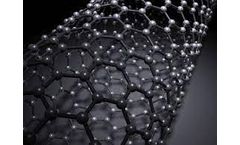fullerene Articles
-
The Challenge: Carbon nanomaterials in the environment: New threats or wonder materials?
A new generation of carbon nanomaterials has emerged over the last decade ‐ including carbon nanotubes, C60 fullerenes, graphene and graphene oxides‐ and has attracted great attention from environmental scientists. Some of those materials offer opportunities to develop new tools for environmental applications (e.g., water treatment), but there are concerns related to the potential risks they ...
-
Magnetic properties of carbon nanostructures
We investigate the magnetic response and the ring currents induced by the presence of an external magnetic field in different carbon nanostructures using a π-electron tight binding model in conjunction with the London approximation. We consider fullerenes, corrugated and non-corrugated carbon nanotori, and finite graphene sheets. For corrugated carbon nanotori, we have constructed the structures ...
-
Interaction of microwave radiation with composites containing nanosized hexaferrite, multiferroics, carbon nanostructures and silicon binder
A new composite consisting of nanosized powders of hexaferrites BaFe12O19 (BaM), multiferroics Co1.6Zn1.4W+CaTiO3 (30%), carbon nanostructures (powder mixture of carbon nanotubes, fullerenes, squamous structures and amorphous carbon) and silicone binder absorbs microwaves. Varying the concentration of each component in the composite materials changes the characteristics of a coating from ...
-
Multi‐generation impacts on Daphnia magna of carbon nanomaterials with differing core structures and functionalizations
Several classes of contaminants have been shown to have multi‐generational impacts once a parental generation has been exposed. Acute and chronic toxicity are described for several types of nanomaterials in the literature, however, no information is available on the impact of nanomaterials on future generations of organisms after the exposure is removed. In the present study, we examined the ...
-
Why Are Carbon Nanomaterials Favored by Researchers?
History of Development As early as 1985, the discovery of fullerene with the “football” structure immediately attracted the world’s attention. Then, carbon nanotubes with a hollow cylindrical structure are formed based on mild modifications toward fullerenes. In 1991, Japanese researchers discovered carbon nanotubes in carbon fibers for the first time. In 2004, researchers ...
Need help finding the right suppliers? Try XPRT Sourcing. Let the XPRTs do the work for you

